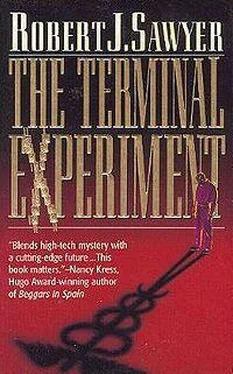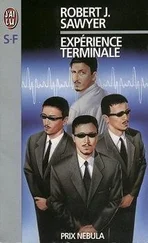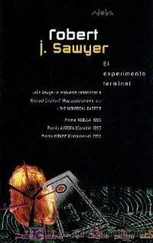“Really?”
“Yes,” said Sarkar. He smiled. “I know what to get you for Christmas this year: a subscription to the Skeptical Inquirer .”
“What’s that?”
“A journal published by the Committee for the Scientific Investigation of Claims of the Paranormal. They blow holes in this sort of thing all the time.”
“Hmm. What about the tunnel?”
“Have you ever had a migraine?”
“No. My father used to get them, though.”
“Ask him. Tunnel vision is common in severe headaches, in anoxia, and lots of other conditions.”
“I guess. But I’d heard that the tunnel was maybe a recollection of the birth canal.”
Sarkar waved his soup spoon in Peter’s direction. “Ask any woman who’s had a baby if the birth canal is even remotely like a tunnel with a wide opening and a bright light at the end. The baby is surrounded by contracting walls of muscle; there’s no tunnel. Plus, people who were delivered by Caesarean section have recounted the NDE tunnel as well, so it can’t be some sort of actual memory.”
“Hmm. What about the bright light at the end of the tunnel?”
“Lack of oxygen causes overstimulation of the visual cortex. Normally, most of the neurons in that cortex are prevented from firing. When oxygen levels drop, the first thing to cease functioning is the disinhibitory chemicals. The result is a perception of bright light.”
“And the life review?”
“Didn’t you take a seminar once at the Montreal Neurological Institute?”
“Umm — yes.”
“And who was the most famous doctor associated with that institute?”
“Wilder Penfield, I guess.”
“You guess,” said Sarkar. “He’s on a bloody stamp, after all. Yes, Penfield, who did work on directly stimulating the brain. He found it easy to elicit vivid memories of long-forgotten things. Again, in an anoxia situation, the brain is more active than normal because of the loss of disinhibitors. Neural nets are firing left and right. So the flooding of the brain with images from the past makes perfect sense.”
“And the sense of peace?”
“Natural endorphins, of course.”
“Hmm. But what about the visions of long-dead friends? The woman I spoke to saw her dead twin sister, Mary, who had died shortly after birth.”
“Did she see an infant?”
“No, she described the vision as looking like herself.”
“The brain isn’t stupid,” said Sarkar. “It knows when it may be about to die. That naturally gets one thinking about people who are already dead. Here is the crisp point, though: there are cases of little children having near-death experiences. Do you know who they see visions of?”
Peter shook his head.
“Their parents or their playmates. People who are still alive. Children don’t know anyone who has already died. If the NDE really was a window into some afterlife, they wouldn’t see people who are alive.”
“Hmm,” said Peter. “You know, the woman who had seen her sister Mary had her NDE while on the phone talking to another woman named Mary.”
Sarkar looked triumphant. “The power of suggestion. It’s all just a normal, explicable brain reaction.” The server came with the bill. Sarkar glanced at it. “My religion teaches that we do continue on after this existence, but the near-death experience has nothing to do with real life after death. If you want to know what that’s like, I’ll give you a copy of the Koran.”
Peter reached for his wallet to pay his half of the tab. “I think I’ll pass.”
Peter Hobson was quite fond of his sister-in-law Marissa. In 2004, her first child had died of Sudden Infant Death Syndrome: she had simply stopped breathing, without any fuss, sometime during her third evening of life. Marissa and her ex-husband had used a standard baby monitor, a microphone that broadcast to a receiver they carried about the house. But little Amanda had died quietly. When Marissa had had another baby a year later, she refused to leave the child’s side. Day or night, for months on end, she would always have the baby in her sight. Intellectually she knew that infant deaths just sometimes happened, but emotionally she blamed herself — if she had been with Amanda when her breathing had stopped, maybe she could have saved her.
Back then, Peter had been working on designs for touchless medical instrumentation. With AIDS continuing to plague the world, there was a big demand for units that didn’t have to come into contact with a patient’s body. At-a-distance heart-rate monitors were easy enough to develop, using declassified sensing equipment originally created for espionage. And detecting brain activity was usually done at a distance anyway — with electrodes separated from the brain by the thickness of the scalp and skull. Eventually, Peter found a way to read the rudiments of brain activity over a great distance, with nothing touching the patient’s skin except a low-wattage infrared laser.
And so the Hobson Baby Monitor was born — a device that could report the vital signs of an infant in another room. He gave the prototype to Marissa and her husband. The monitor’s built-in alarms would warn them immediately if their baby was in distress. They were delighted with the unit, and at Cathy’s urging, Peter quit his job at East York General Hospital and started a little company to sell his baby monitors.
And then, one morning, Peter was lying next to his wife in bed. He needed to pee. Looking at the clock radio, he saw it was 6:45 A.M. The alarm would go off at seven. If Cathy was sleeping lightly, Peter knew that his getting up now would wake her, depriving her of her last quarter hour of sleep, something he’d hate to do.
Peter lay there, enduring the pressure in his bladder. He wished he knew whether she was sleeping soundly. Maybe she was even already awake, but just had her eyes closed.
And then it hit him — a completely different use for his monitoring technology. The product appeared fullblown in his mind. A panel on the wall opposite the bed, with two clusters of readouts, one for each person in the bed. In each cluster, there’d be a big LED and a small one. The big one would indicate the person’s current sleep state, and the small one would indicate the state he or she was moving into. There’d also be a digital counter indicating how long until the transition between one state and the next would take place — after just a few nights’ training, the unit would have the individual users’ sleep cycles down pat.
The LEDs would change color: white would mean the person was awake; red would mean the person was in a light sleep and would definitely be disturbed by any noise or movement. Yellow would mean the person was in a medium sleep, and so long as care was taken, one could get up and go to the bathroom, or cough, or whatever, without disturbing one’s partner. Green would mean the person was in deep sleep, and you could probably do limbo dancing in the bed without disturbing him or her.
It would be pig-simple to read: a big yellow light with a small green one, and 07 showing on the counter would mean if you got up now, you might disturb your partner, but if you could hold off for seven minutes, she would be fast asleep and you could slip out without waking her.
As the urinary pressure gave Peter a typical early-morning erection, he realized something else. He’d often awoken horny at 2:00 or 3:00 A.M. and wondered if his wife was awake, too. If she had been, they’d probably have made love, but Peter would never dream of waking her up for that. But if the monitor happened to show white lights for both of them, well, then, what had started out as the Hobson Baby Monitor might end up being responsible for lots of new babies…
Читать дальше








